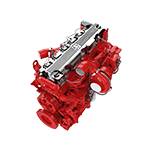Nov . 10, 2024 11:47 Back to list
How to Fix a Stuck Brake Drum That Won't Fit Back On
Troubleshooting Why Your Brake Drum Won't Go Back On
Replacing or servicing brake components can be a challenging task, especially when it comes to reassembling parts like the brake drum. One common issue that many vehicle owners face is the brake drum not fitting back onto the wheel assembly. Understanding the reasons behind this can help you troubleshoot and solve the problem effectively.
1. Understanding the Brake Drum System
Before delving into the reasons why a brake drum might not fit back on, it's essential to understand the structure of the brake drum system. The brake drum is part of a drum brake system that includes several components the drum itself, brake shoes, springs, and a wheel cylinder. When you press the brake pedal, fluid from the master cylinder pushes the wheel cylinder, which forces the brake shoes against the inner surface of the drum, creating friction that slows down the vehicle.
2. Common Reasons for Brake Drum Installation Issues
There are several reasons why a brake drum might not go back on properly after removal. Here are some common culprits
a. Brake Shoe Misalignment One of the most frequent issues occurs when the brake shoes are not correctly aligned or have been pushed out of their holding position during the removal of the drum. If the shoes are sticking out too far, the drum won't fit over them. Adjusting or realigning the shoes is often the first step in resolving this issue.
b. Worn or Damaged Components If either the brake drum or the shoes are excessively worn or damaged, they may not fit together correctly. Inspect the brake drum for grooves, cracks, or excessive wear. Similarly, check the brake shoes for damage. If any components are significantly worn, they may need to be replaced.
c. Incorrect Adjustment of the Brake Shoes Many vehicles come with an automatic adjuster system that self-adjusts the brake shoes as you use the brakes. However, sometimes, the adjusters can malfunction or may not work as intended. If the shoes are incorrectly adjusted, they might be too far apart or not extending far enough, preventing the drum from sliding back on. Before installation, make sure the shoes are properly adjusted to the correct width.
d. Corrosion and Dirt Buildup Over time, dirt, rust, and corrosion can build up on the brake components, including the brake drum and the backing plate. This buildup can interfere with the smooth functioning of the drum. Cleaning the brake components with a wire brush or brake cleaner can remove this debris, allowing the drum to fit more easily.
brake drum won't go back on

e. Improper Installation of Other Components Sometimes, other components in the braking system, like the wheel cylinder or springs, may have been incorrectly installed. If any of these components are protruding or positioned in a way that interferes with the drum, it will prevent installation. Double-check the positioning and secure placement of all components before attempting to fit the drum.
3. Steps to Troubleshoot the Issue
If you're struggling to get the brake drum back on, follow these troubleshooting steps
1. Inspect the Brake Shoes Remove the drum once more and check the alignment of the brake shoes. Ensure they are seated properly inside the drum.
2. Check Adjustments Evaluate the brake shoe adjustments. If you’re using an automatic adjuster, make sure it’s functioning correctly, and manually adjust the shoes if necessary.
3. Clean the Components Utilize a cleaning agent specifically designed for brake components to eliminate any rust or debris that might be causing friction.
4. Examine for Wear and Damage Look for any signs of wear on the brake shoes and drum. Replace any damaged components.
5. Reassemble with Care Carefully reassemble the system, ensuring that all components are correctly positioned before trying to install the drum again.
Conclusion
If your brake drum won't go back on, don't be discouraged. Brake systems can be intricate, but with careful inspection and adjustment, you can resolve the issue. Remember to always prioritize safety and, if in doubt, consult a professional mechanic. Proper servicing and understanding of your brake system can lead to a safer and more efficient driving experience.
-
Scania Brake Drums: OEM Quality for Optimal Safety & Durability
NewsAug.16,2025
-
R.V.I: Advanced Remote Visual Inspection for Precision
NewsAug.15,2025
-
Discover HYUNDA: Innovative Vehicles, Equipment & Solutions
NewsAug.14,2025
-
R.V.I: Unlock Advanced Insights & Real-time Performance
NewsAug.13,2025
-
Kamaz Brake Drum: Durable & Reliable for Heavy Duty Trucks
NewsAug.12,2025
-
Heavy Duty Iveco Brake Drum - Premium Quality & Safety
NewsAug.11,2025
